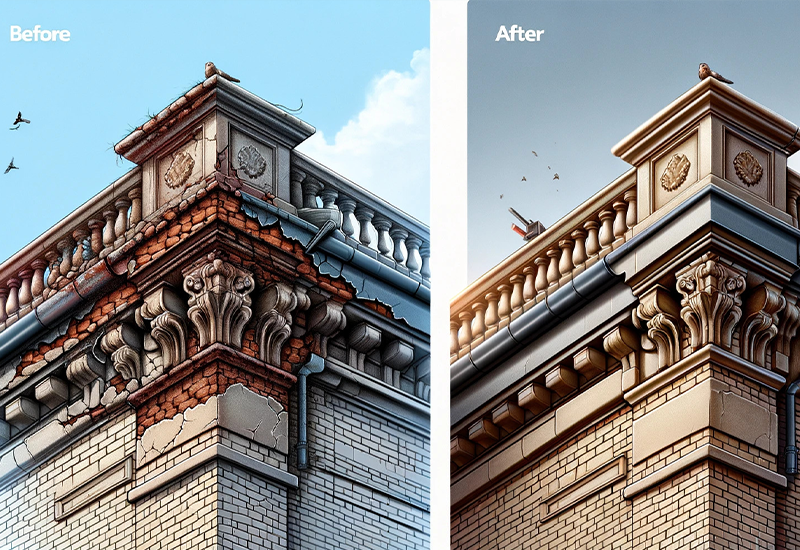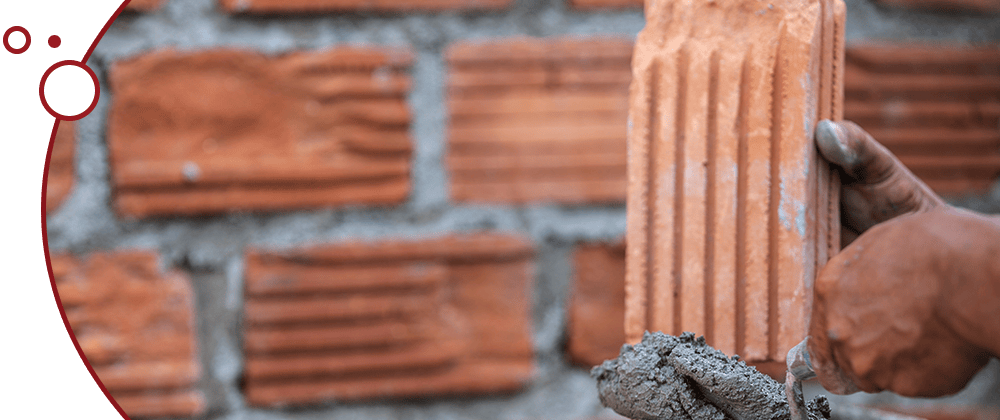
Have you ever wondered, “what is a parapet wall“? These structures, often seen at the edges of roofs or balconies, are more than just architectural elements. Originally designed for defense in ancient times, parapet walls have transformed into vital components in modern construction. They blend history, safety, and aesthetics, offering a unique glimpse into the architectural evolution over centuries. This article dives into the fascinating world of parapet walls, exploring their types, functions, and role in contemporary architecture.
Table of Contents
History and Evolution of Parapet Walls
Parapet walls have a story that’s as old as some of the ancient civilizations themselves. Originally, they were more than just architectural features; they were vital for protection in fortresses. Imagine high stone walls around a fortress – these were the early parapet walls, essentially a defense mechanism against enemies.
Early Beginnings of Parapet Walls
You know, when we talk about parapet walls, we’re really taking a trip back in time. Their story begins in ancient civilizations where they were not just walls but crucial defensive structures in fortresses. Picture this: towering stone walls surrounding a fortress, with soldiers peering over them, ready to defend their territory. That’s the essence of early parapet walls – they were about protection and strategy, not just architecture.
Parapet Walls in the Middle Ages
Fast forward to medieval times, and our parapet walls are still playing a starring role in history. This time, they’re in the thick of battles, providing soldiers with a shield from enemy attacks. These walls were not only functional but also had strategic slots and openings for archers and lookouts. It’s fascinating how these structures, which we now see as architectural elements, were once pivotal in warfare!
Transition to Modern Architecture in Parapet Walls
As we moved out of the age of castles and battlements, parapet walls didn’t just fade into history. Instead, they evolved. With new building technologies and architectural styles emerging, these walls transitioned from purely defensive roles to more aesthetic and functional ones in buildings. Today, they add charm, style, and safety to structures, beautifully blending their historical essence with modern needs.
Types of Parapet Walls
Now, let’s talk about the different types of parapet walls we see today. They’ve evolved to suit different architectural styles and needs, far from their one-size-fits-all origins.
Solid Parapets
First up are solid parapets. These are the strong, silent types – robust, providing privacy and protection. Picture a rooftop with a solid barrier around it – it’s not just for safety, but also for creating a private, secluded space. Solid parapets are a common sight in residential buildings, offering a blend of practicality and privacy.
Balustrade Parapets
Then we have the balustrade parapets. These are the elegant ones, often seen in classical architecture. They feature a series of spaced balusters, offering not just safety but also adding a decorative element. Balustrade parapets are like the jewelry of a building, enhancing its appearance and adding a touch of sophistication.
Embattled Parapets
Lastly, let’s talk about embattled parapets. These are a throwback to medieval times, with their notched and crenelated designs resembling battlements. They bring a historical and grandeur element to modern buildings, evoking images of castles and fortresses. Embattled parapets are perfect for those who want to add a touch of historical flair to their buildings.
Functions of Parapet Walls: Examining What is a Parapet Wall
When we look at parapet walls, it’s not just about their looks; they have some serious jobs to do. From safety to aesthetics, these walls are multitaskers in the world of architecture.
Safety Features of Parapet Walls
The primary job of a parapet wall? Keeping people safe. Imagine you’re on a high rooftop or a balcony. That low wall along the edge isn’t just for show – it’s there to make sure you don’t accidentally take a tumble off the side. It’s like a silent guardian, especially important in high-rise buildings where the risk of falls is greater.
Aesthetic Appeal in Parapet Wall Design
But these walls aren’t all work and no play. Architects love them for the beauty they bring to a building. Think about it – a plain roof edge versus one with an elegantly designed parapet wall. The difference is huge, right? They add character, style, and often become a defining feature of a building’s overall look.
Weather Protection Offered by Parapet Walls
Another cool thing about parapet walls is their role in weather protection. They act like a shield, defending the roof and sides of buildings from the brunt of weather elements like wind, rain, and snow. It’s like having an extra layer of armor for your building, keeping it safe and sound.
Design and Construction: Crafting What is a Parapet Wall

Now, let’s talk about what goes into making these parapet walls. It’s not just about stacking up some bricks – there’s a whole science behind it.
Material Choices for Parapet Walls
The materials used in parapet walls can vary a lot. We’ve got the classics – stone, brick, and concrete. Each has its own perks. Stone is super durable and has that timeless look, brick brings a traditional charm, and concrete is all about modern strength and versatility. The choice of material often depends on the building’s design and the wall’s intended function.
Structural Considerations in Parapet Wall Design
There’s more to these walls than just picking the right material. You’ve got to think about how tall and thick they need to be, and how they’re going to be supported. It’s like putting together a puzzle – every piece needs to fit just right. The height has to be enough for safety but not too much to overshadow the building’s design. The thickness and the support system depend on the wall’s height, material, and the weather conditions it needs to withstand.
Parapet Walls in Contemporary Architecture
Now, let’s shift our focus to how parapet walls have adapted to the needs and trends of modern architecture. It’s not just about sticking to traditional designs; it’s about evolving and adopting new functionalities.
Eco-Friendly Designs
You might find this cool – many modern parapet walls are now embracing eco-friendly designs. We’re talking about parapets that don’t just sit there looking pretty, but also contribute to the environment. Imagine a rooftop with a parapet wall that has a green roof or solar panels. It’s like giving your building a mini eco-system or its own power source. These walls are turning rooftops into more than just empty spaces, making a statement about sustainability and environmental responsibility.
Integrating Technology
And here’s where things get even more interesting. With the tech wave hitting architecture, parapet walls are no longer left behind. Nowadays, it’s not unusual to see parapet walls featuring integrated lighting systems or even digital displays. Think about it – a parapet wall that lights up your building’s name or displays artistic patterns. It’s like having a canvas on the edge of your roof, combining safety with cutting-edge technology. This blend of design and tech is pushing the boundaries of how we view traditional architectural elements.
Maintenance and Upkeep: Preserving What is a Parapet Wall
Let’s not forget, having a parapet wall is a responsibility. It needs care and attention to ensure it stays in good shape and continues to fulfill its role.
Regular Inspections
Regular inspections are crucial. Just like you’d regularly check your car, your parapet walls need the same kind of attention. You need to look out for cracks, signs of wear and tear, or any potential weaknesses. These checks are vital to catch any issues early on, preventing bigger problems down the line. It’s all about being proactive rather than reactive when it comes to maintaining these structures.
Weatherproofing Techniques
Weatherproofing is another key aspect. Parapet walls face all the elements – sun, rain, wind, snow, you name it. To make sure they stand the test of time, applying weatherproofing techniques is essential. This can range from using water-resistant materials to regular applications of protective coatings. By doing this, you’re not just maintaining the wall; you’re prolonging its life and ensuring it continues to protect and enhance your building.
Conclusion
So, in our exploration of “what is a parapet wall“, we’ve seen how these structures have stood the test of time, evolving from ancient fortifications to key elements in modern architecture. Whether it’s about enhancing safety, adding aesthetic value, or embracing eco-friendly designs, parapet walls continue to play a significant role in our buildings. They’re not just historical artifacts; they’re living parts of our urban landscape, adapting and thriving in the ever-changing world of architectural design.
FAQs
Q: What is a parapet wall and why is it important?
A: A parapet wall is a barrier that is an extension of the wall at the edge of a roof, terrace, balcony, or other structure. They are crucial for providing safety by preventing falls and adding an aesthetic appeal to buildings.
Q: How does a parapet wall contribute to safety?
A: Primarily, a parapet wall prevents accidental falls from elevated areas like rooftops or balconies. It acts as a guardrail, offering a protective barrier against potential hazards.
Q: What materials are commonly used in building a parapet wall?
A: Common materials for constructing a parapet wall include stone, brick, and concrete. The choice depends on the building’s design and structural requirements.
Q: Can parapet walls be customized for different architectural styles?
A: Absolutely! While understanding what is a parapet wall, it’s essential to know they can be tailored to match various architectural styles, from traditional to modern designs.
Q: Are there any modern innovations in parapet wall design?
A: Yes, modern parapet walls integrate eco-friendly elements like green roofs and technological features such as lighting and digital displays, reflecting contemporary architectural trends.


